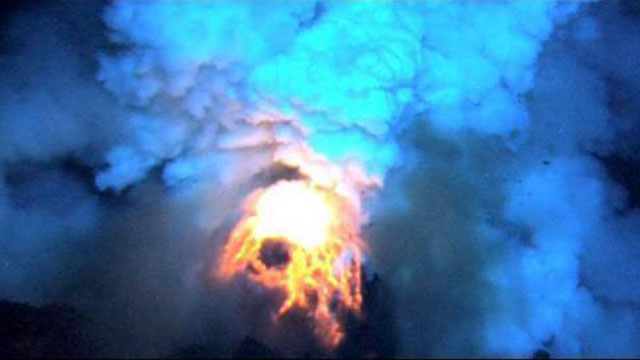Salih’s Long Goodbye

Three months after popular protests began in earnest, Yemeni President Ali Abdullah Salih continues to cling to power. His military has split. Powerful tribal shaykhs have deserted him and protesters continue to be gunned down in the streets by thugs and snipers. But still Salih remains entrenched in the presidential palace.
His refusal to step down and the protesters equally determined stand has created a tense standoff across the country as each waits for the other to break first. This long, lingering goodbye is strangling Yemen’s already fragile economy and exacerbating serious security concerns that may take years to correct.
Yemen has long been the caboose of political fashion in the Arab world. The 1962 revolution, which laid the groundwork for the nominally Republican system in the north, was a carbon copy of Egypt’s revolution a decade earlier. Egyptian President Gamal Abd al-Nasser, who had been agitating for revolt, sent thousands of troops to the country and helped shape Yemen’s first constitution, which was modeled on its Egyptian precursor. Nearly fifty years later the story remained the same. Yemen once again followed Egypt’s lead.
On February 11, the day Hosni Mubarak stepped down in Egypt, dozens of Yemeni protesters took to the streets for the first time outside the umbrella of Yemen’s formal opposition. For weeks, inspired by events in Tunisia and Egypt, the Joint Meeting Parties (JMP), an eclectic grouping of six opposition parties, had been organizing protests as a way of pressuring President Salih to drop a constitutional amendment he was shepherding through parliament that would have done away with presidential term limits.
The opposition organized marches that put thousands into the streets, but there was no sustainability. The protests lasted only a few hours, and by early afternoon, when many Yemenis retire to the daily qat chew, they disbanded. What started on February 11 was different.
This time the protests didn’t end. Salih loyalists, worried about a replay of Cairo’s January 25 Revolution, blocked Sanaa’s Tahrir Square, which like so much else in Yemen took its name from the Egyptian original. Undeterred the students and activists eventually set up camp outside Sanaa University, dubbing the area MidanTaghyir, the Square of Change. Slowly, in fits and starts, the movement spread across the country.
In Taizz, another center of popular resistance, young people camped out downtown, promising not to leave until Salih did. In the southern port city of Aden, the former capital of southern Yemen, there were running battles as security forces opened fire on protesters who fought back with rocks and jagged chunks of cement.
Throughout February and early March the protests gained momentum as a handful of parliamentarians defected and the movement for change started to spread to Yemen’s rural regions. Unlike Egypt, which has a much higher rate of Internet penetration, many Yemenis still suffer from a lack of electricity, which hampered early organization.
The turning point came on March 18, when snipers in buildings around the Square of Change opened fire on protesters shortly after they stood up from performing Friday prayers. In less than a half hour of intense shooting, the gunmen managed to kill 52 protesters, mostly with shots to the head.
The gory footage of bloody young men being dragged into a nearby mosque, which was pressed into action as a triage center and temporary hospital, was broadcast around the world by al-Jazeera.
Three days later, Ali Muhsin al-Ahmar, the head of the 1st Armored Division and the most powerful general in the army, announced on the satellite channel that he was defecting and joining the protesters. Ahmar, who also commands the Northwest military sector, one of Yemen’s four military zones, was joined by another top general moments later. Within ten minutes Salih lost the two generals responsible for half the country. Ahmar’s defection was particularly shocking, as he came from the president’s own Sanhan tribe, and had been the iron first of Salih’s rule for more than three decades.
A number of senior military figures followed Ahmar’s lead, while politicians at home and abroad scrambled to avoid being the last one off a sinking ship, many of them calling al-Jazeera to announce their resignation live on the air. By the time the dust settled large portions of the military and political establishment had defected and were calling for President Salih to step down.
Only the branches under the leadership of Salih’s immediate family members remained loyal. The Air Force, commanded by his half-brother, most of the Republican Guards and Special Forces, which his son controlled, and the Central Security Forces, headed by his nephew, all continue to support the president.
Despite some tense moments, including what Ahmar claimed was an assassination attempt by Salih in early April, the two sides have largely avoided open fighting. Instead Sanaa and much of the rest of the country has sunk into a state of political paralysis. Army units have abandoned checkpoints and withdrawn from bases in some rural regions, leaving security in these areas to the tribes. This has created a situation where some tribes, eager to press grievances against the government, have cut power lines and blockaded roads to prevent supplies from reaching the capital.
Yemen’s already weak economy may not be able to recover. Its central banking reserves are reportedly running low after weeks of counter protests organized by the government. The Yemeni Riyal, which had been hovering around 200 – 1 against the dollar, has dipped as low as 250 – 1. Few banks are even offering dollars. The political stalemate has also sparked a cooking gas shortage, and diesel and petrol supplies are starting dry up as well.
Water supplies, never plentiful to begin with, are in similarly short supply. The prices of basic foodstuffs are rising as well, which will tax many Yemeni families who hover around the poverty line. All of this could have disastrous long-term consequences for Yemen, as it struggles to adjust to a post-oil economy with little planning and a crumbling infrastructure.
Salih’s exit, whenever and however that happens, will not change this dire reality. Job creation, never an easy task in Yemen, which suffers unemployment as high as 45 percent, will be a primary challenge for the next government as it attempts to correct the country’s course after years of misrule.
At the moment the protest movement is held together only by its shared opposition to Salih. Maintaining this fragile alliance in the face of mounting economic challenges and the artificially inflated expectations of the country’s young people could prove debilitating for Yemen’s new leaders.
Any failure, particularly in addressing the unemployment problem, may well benefit al-Qaeda in the Arabian Peninsula (AQAP). Already the organization is taking advantage of lapsed security in many parts of the country to regroup and further plans for future attacks. The last time AQAP had this much time and space in which to operate it put together the 2009 Christmas Day attack, which narrowly missed bringing down an airliner over Detroit.
US officials aware of the dangers of a security vacuum and eager to press their advantage after killing Osama bin Laden on May 1, apparently authorized a drone strike that killed two AQAP suspects in southern Yemen on May 5. The operation, the first in nearly a year by the US in Yemen, is a dangerous escalation that could easily backfire. The last US airstrike, in May 2010, missed its al-Qaeda target and instead killed a Yemeni government official, Jabir al-Shabwani, the deputy governor of Marib. His tribe is currently among those blockading roads and destroying power lines, justifying its actions as retaliation for Salih’s complicity in the attack. All of this, of course, has only further exacerbated the political and economic crisis in the capital.
Yemen is at a dangerous juncture. Every attempt at mediation, including a recently flawed approach by the GCC, has failed, as Salih stalls and equivocates on public pledges, hoping to somehow survive in power.
The US, which could do much to pressure Salih, has remained strangely tone deaf throughout the crisis. On April 28, the day after security forces killed 15 demonstrators, the US Embassy in Yemen issued a statement calling on protesters to avoid “all provocative demonstrations, marches, and speeches in the coming days.” The two paragraph press release asked, in essence, for Yemen’s peaceful protesters to give up their only point of leverage.
Repeated public missteps by diplomats in Sanaa combined with renewed air strikes risk inflaming an already volatile situation. Instead of privately backing the plans of others, which are widely mistrusted on the ground, the US needs to take the lead in publicly calling for Salih to step down. Very little is certain in Yemen at the moment, but it is clear that the longer Salih drags out his goodbye the worse off the country will be.





